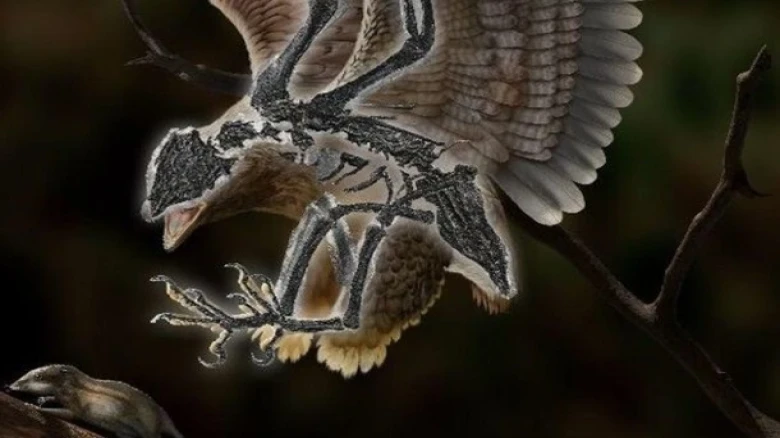The fossil, Cratonavis Zhui, has an enlarged scapula and first metatarsal, differentiating it from all other birds, including fossil ones...
Digital Desk: A new fossil from China has left scientists astonished at the evolutionary journey of birds, which are thought to be descendants of dinosaurs. Paleontologists have found a complete 120-million-year-old fossil with a dinosaur-like skull on a bird-like body.
The fossil, Cratonavis Zhui, has an enlarged scapula and first metatarsal, differentiating it from all other birds, including fossil ones. The latest finding points to a significant morphological, functional, and ecological transformation that resulted in the distinctive bird body plan.
According to the journal Nature Ecology & Evolution, the new discovery demonstrates a wide range of skeletal plasticity resulting from separate developmental modules and selection for presumably raptorial behaviour. The Cretaceous epoch, according to researchers, is a significant time interval marked by tremendous diversifications of terrestrial animals.
Paleontologists from the Chinese Academy of Sciences' Institute of Vertebrate Paleontology and Paleoanthropology (IVPP) investigated the unique fossil. The team used high-resolution computed tomography (CT) to scan.
They digitally removed the bones from their rocky tomb and restored the skull's original shape and function. They found that the Cratonavis skull is nearly identical to those of dinosaurs like Tyrannosaurus rex, rather than being bird-like.
"The primitive cranial features speak to the fact that most Cretaceous birds, such as Cratonavis, could not move their upper bill independently with respect to the braincase and lower jaw, a functional innovation widely distributed among living birds that contribute to their enormous ecological diversity," said Dr. LI Zhiheng, a lead author of the study.
Researchers noted that the scapula is functionally vital to avian flight, and it conveys stability and flexibility. The researchers trace the scapula's evolution during the theropod-bird transition and propose that the extended scapula could supplement the muscle's mechanical advantage for humerus retraction and rotation.
"An increased evolutionary lability was present among Mesozoic birds and their dinosaur kins, which may have resulted from conflicting demands associated with its direct employment of the hallux in locomotion and feeding," Dr. Thomas Stidham, co-author of the paper, said in a statement.
The current study demonstrates that during the dinosaur-bird transition, the first metatarsal was subjected to selection that preferred a shorter bone. It then lost its evolutionary flexibility after it achieved its ideal size, which was less than a quarter of the length of the second metatarsal.

Leave A Comment